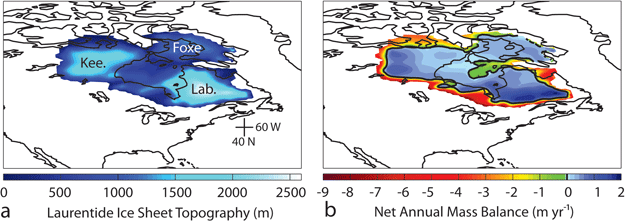This project is to employ a new technique to address ice sheet disintegration through the use of paired simulations of a fully coupled atmosphere-ocean general circulation model (GCM) containing water isotopes and an energy mass balance model (EMBM) of ice sheet mass balance. We are collaborating with co-PI Allegra LeGrande at NASA GISS with this work. Our team is this new technique at discrete millennial time slices to the last deglaciation (21,000 to 10,000 years ago), when large Northern Hemisphere ice sheets disappeared. To test the skill of GCM results, the we are using tracers built into the model (i.e., water isotopes, cosmogenic isotopes, dust, sea salt, and wetland methane emissions) for which there are proxies in the paleoclimate record. GCM results will force the EMBM to simulate ice sheet mass balance at each time slice and will test the skill of the EMBM by comparing its predictions of ice sheet mass loss to that inferred from the geologic record of ice margin change during deglaciation. The overall research goal is to determine the minimum amount of melt water available to contribute to the small-scale processes involved in ice sheet decay.

- Allegra LeGrande - NASA GISS
- Faron Anslow - U. British Columbia
- Joe Licciardi - U. New Hampshire
GRADUATE STUDENT
- Dave Ullman